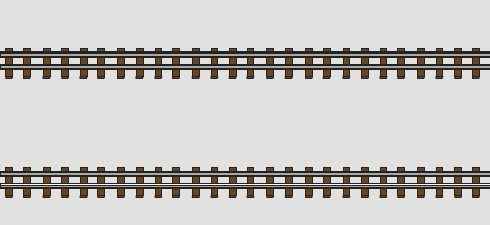A Powerful “Force”
It affects weather patterns, it affects ocean currents, and it even affects air travel. As important as the Coriolis Effect is, many have not heard about it, and even fewer understand it. In simple terms, the Coriolis Effect makes things (like planes or currents of air) traveling long distances around the Earth appear to move at a curve as opposed to a straight line.
It’s a pretty weird phenomenon, but the cause is simple: Different parts of the Earth move at different speeds.
What Do You Mean Parts of Earth Move at Different Speeds!?
Think about this: It takes the Earth 24 hours to rotate one time. If you are standing a foot to the right of the North or South Pole, that means it would take 24 hours to move in a circle that is about six feet in circumference. That’s about 0.00005 miles per hour.
Hop on down to the equator, though, and things are different. It still takes the Earth the same 24 hours to make a rotation, but this time we are traveling the entire circumference of the planet, which is about 25,000 miles long. That means you are traveling almost 1040 miles per hour just by standing there.

Shorter distance to travel in the same amount of time means slower speeds closer to the poles. Credit: NOAA/JPL-Caltech
So even though we are all on Earth, how far we are from the equator determines our forward speed. The farther we are from the equator, the slower we move.
Okay. So How Does That Prevent Things from Traveling in a Straight Line?
Good question! Now think about this: You are on a train traveling at top speed and you are passing a train that is moving a bit slower. You see, for some mysterious reason, that there is a soccer goal on this slower train. Always prepared, you happen to have a soccer ball handy and want to make an impressive trick shot.
You take an incredible shot directly at the goal when you are even with the slower train. Even though your aim is dead-on, the ball travels to the side and misses the net. That’s because the ball is traveling not only in the direction of the goal, but it is also going in the direction (and speed) of your train.

This is what happens with our attempted trick shot. Credit: NOAA/JPL-Caltech
Let’s pretend these trains are the Earth at different latitudes and add another red train. Think of the two red trains as the northern and southern tropics and the blue train as the equator. The red trains are going slower than the blue train. Remember, the farther you go from the equator, the slower you move.
Now let’s put our trains on an actual Earth-shaped globe:

The trains still move at different speeds, but now they would appear to travel parallel to each other. Credit: NOAA/JPL-Caltech
Even though the red trains are going slower than the blue train, since they are traveling a shorter distance, they would appear from a bird’s-eye view to be going at the same speed. That doesn’t mean your trick shot would behave any differently though.
From a bird’s-eye view, it would look like this:

A bird's eye view. Credit: NOAA/JPL-Caltech
And that’s the deflection we are talking about! Anything traveling long distances, like air currents, ocean currents pushed by air, and airplanes, will all be deflected because of the Coriolis Effect! Weird, right?
Hurricanes and the Coriolis Effect
One of the most important things the Coriolis Effect acts on are storm systems. Big storms like hurricanes and typhoons (tropical cyclones) are low-pressure systems. That means that they suck air into their center.
But as we just learned, air traveling long distances across Earth does not simply move in a straight line. Just like our soccer ball, the air being sucked into the storm deflects. This deflection is what causes tropical cyclones to spin.

Hurricane Sandy from 2012. Credit:NOAA.
Another thing the Coriolis Effect does is make these massive storms rotate in different directions in the Northern and Southern Hemispheres.
Take a look at our bird’s-eye view picture of trains to the left. You will notice that the ball kicked on the north side of the tracks appears to travel to the right from the viewpoint of the kicker. The ball kicked to the south, though, appears to the kicker to travel to the left.
That’s no mistake. That’s actually what happens, and it applies to any large distance movement throughout each hemisphere. The result? Storms in the Northern Hemisphere spin counterclockwise and those in the Southern Hemisphere spin clockwise.

Credit: NOAA/JPL-Caltech




